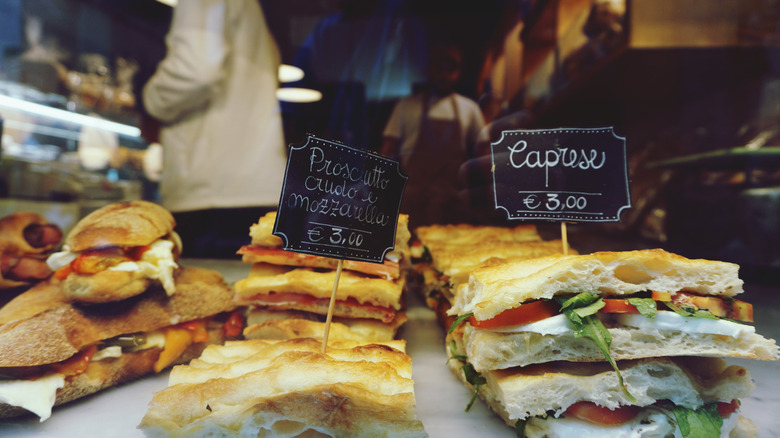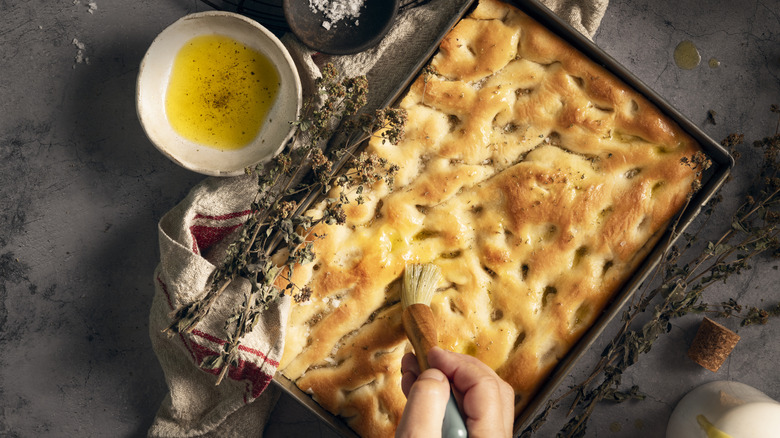Schiacciata Vs Focaccia: What's The Difference?
When most of us think of Italian bread, the first thing that comes to mind is focaccia. This thick, springy bread often topped with rosemary and sea salt is a treat to eat fresh out of the oven, all on its own, to let the depth of flavors shine. It's also the bread many American Italian restaurants start off meals with, accompanied with olive oil and balsamic vinegar for dipping.
But what about its lesser known cousin, schiacciata? This bread is similar to focaccia, but is thinner and has a signature crunch that is great for appetizers and snacks. Unlike focaccia, with its soft, cushiony quality, schiacciata is crispy on the outside and soft on the inside with a more compact texture that makes it ideal for making sandwiches. The most famous schiacciata sandwich can be found in Florence, Italy, where people line up down the street at the sandwich shop All'Antico Vinaio to get a taste of the world famous La Favolosa sandwich, made with fresh schiacciata bread, and filled with salami, spicy eggplant, and either pecorino or artichoke cream.
What exactly makes the two breads different?
Both are considered flatbreads, so the differences are subtle but important. Focaccia hails from Genoa while schiacciata's origin is in Tuscany. Similar ingredients are used for both, but the contrasting textures are a result of how the breads are prepared. Simply speaking, focaccia has higher portions of both water and olive oil in the dough, which creates a rich flavor and spongy consistency. It takes longer to rise and makes a taller bread. One of the tricks to making extra savory and rich focaccia is to give the bread a generous coating of high quality olive oil and use your fingers to create indents, letting the oil pool up inside the grooves. It will slowly seep into the bread, and keep it from drying out.
In contrast, schiacciata recipes call for less water and oil so the bread comes out flatter and chewier. It's also much easier to make than focaccia as you need just three ingredients: flour, water and yeast. To simplify things further, neither a mixer or rolling pin are required. Schiacciata ("squashed" in Italian) gets its name from how you shape the dough after it rises. It should be pressed down into the pan with your hands and then gently brushed with olive oil to give it that crispy quality, while maintaining a chewy center.

